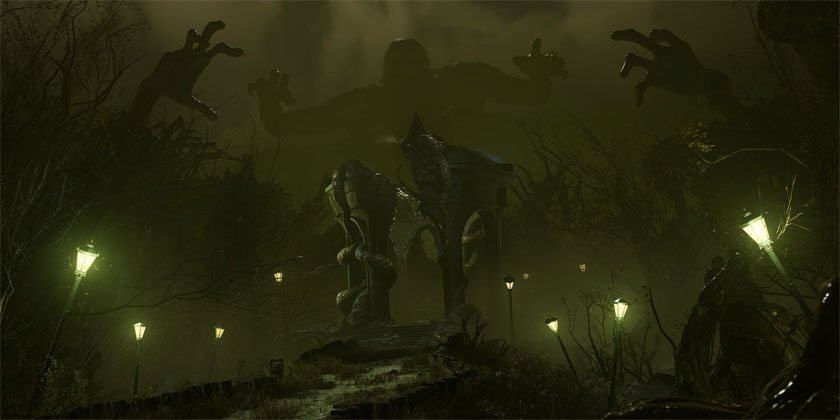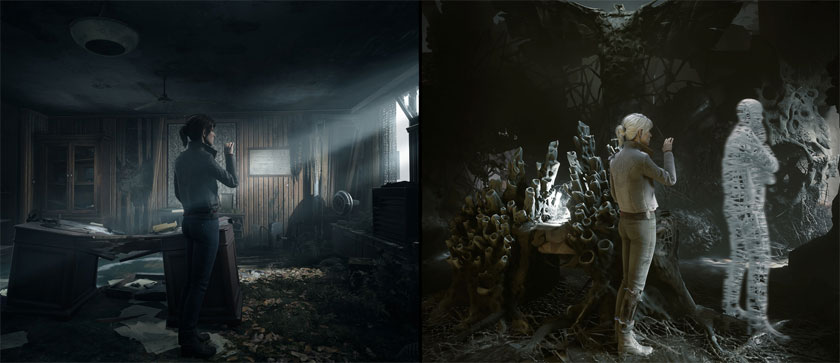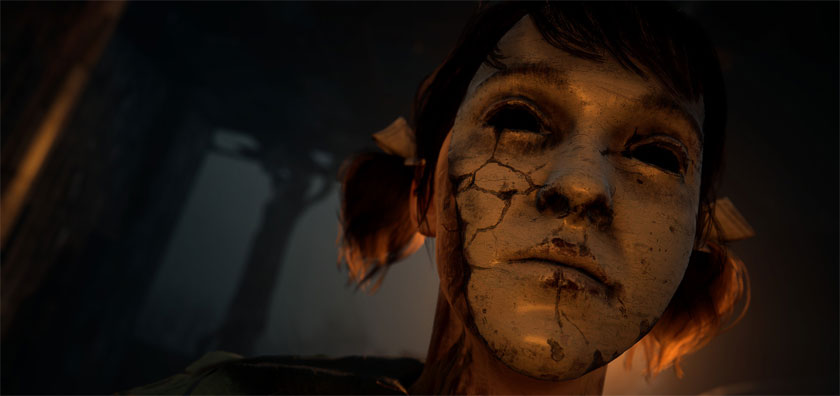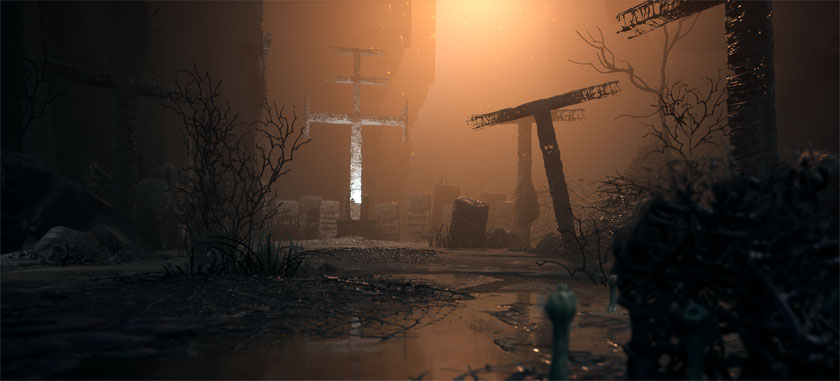The Medium

I can’t remember the last time I played a video game whose ending burned up any good will I had for it. There are plenty of games for which their endings left me either apathetic or dissatisfied, but rarely has a game concluded in a manner that just upset me to the extent that The Medium had.
Perhaps if there were more to the actual experience of playing it, I’d have been more forgiving. I don’t mean that as a dig towards its lack of combat mechanics or anything, either. This is a psychological horror game that is clearly inspired by the earlier entries of the Silent Hill franchise. Clumsy combat mechanics were never their strong suit, so it makes sense for an independently developed spiritual successor to cut out what the franchise did poorly in order to focus on its strengths. With Silent Hill, those strengths are the narrative, atmosphere, characters, and puzzles.
Unfortunately, The Medium failed to measure up to just about any of those categories for me. I’m tempted to at least claim it was an “interesting” game, but this would either imply I’m trying to kindly call it “bad” – which it really isn’t – or that any deeper contemplation would do anything more than further confound. The game’s conclusion could have saved its otherwise forgettable nature had it ended on a strong note. Instead, The Medium became my very definition of a “Game Pass game”.
Keep in mind that I believe games ought to be replayed, and I fear that services like Game Pass turn them into disposable pieces of basic consumption. No rumination, no consideration, no savoring of the experience and really contemplating the developer’s intent. Just consume and move onto the next product in line. So to claim The Medium is the very definition of a “Game Pass game” means that it feels like a game that you consume once and then forget about.
I might have come away feeling differently if it only had a better ending.
I do not mean to diminish the effort the developers put into this game, either. Bloober Team had a message for fans once the credits had rolled, informing them that it was their largest project yet and that they’d appreciate a review or feedback on the storefront from which it was purchased. I dismissed this request because I was feeling cranky from the conclusion, and I also knew I wouldn’t be able to sufficiently give the team their due in a simple storefront customer review.

The dual-screen gameplay between the mortal and spirit or mind realms may have been more interesting, had it not already been done several times on the Nintendo DS and 3DS by other games.
The Medium is a psychological horror that is clearly intended to examine how traumatic experiences can impact a person’s psyche. How certain horrific or painful moments in one’s childhood can give rise to “an inner monster”. In one character’s case, it’s almost a curse that haunts them and they yearn to be free of it. With another character, it seems as if this “monster” is more accurately characterized as the sin dwelling inside. However, this second character is also not so clearly “traumatized”. The monster is the sin, but there is no guilt that individual felt towards it.
Which immediately transforms the meaning of the inner monster. Is the monster created by sin or by trauma? Suddenly I’m trying to figure out the rules to this alternate reality that seems equal parts spiritual and psychological. For the majority of the game, this sunless, wasteland alternative to our world comes off as a shared realm where spirits dwell. Our very first moment occupying this realm implies that any spirit within it has yet to cross over to the other side. However, the two characters mentioned previously are also “dove” into rather than met in this alternate spirit realm. It looks no different, marked by the same color palette, presence of other-worldly monsters, and masked spirits represented as children. All of the surroundings, however, are constructed by locations, objects, or other scenery personalized to that individual’s life and potential trauma.
Even if we accept that there is a shared spiritual realm, it begs the question of what this personal realm is and why it looks no different than the shared realm. If they are two distinct locations, such as one limbo universe and one being the inner soul or mind of that individual, there should be greater visual distinctions in the color palette. If, however, they are the same, then… well, why is it personalized in one instance and not the next?
The “monsters” also exist separately from what I presume are “souls”. What, specifically, is the “monster”, though, at least compared to the soul? Are they connected or not? Are they the true self or is the masked humanoid the soul? Does it vary from person to person?
This only becomes more vague when you consider the Maw, the monstrous beast that acts as an antagonist of sorts to the player-controlled Marianne. It stalks her, desperate to “wear” her, speaking nonsense in tortured whimpers and guttural cries of hunger. Where did it come from? Or, more specifically, who does it belong to? Thus far every monster we’ve seen has been tied to some humanoid soul Marianne has encountered. While there is a connection to one of the game’s primary cast, it sounds as if it is not tied to that person in the same way. It is as if someone else’s monster has begun to invade.
So, what, exactly, are the souls, what are these realms, what are the monsters, and how do they all tie together?

One of the spirits the player comes into contact with early in the game.
The game doesn’t really explain. It actually seems to move so fast that it can’t properly indulge in the details. That, or it’s too focused on “the mystery”. Handled properly, such a mystery can be a good thing. I do not need to know the origin of the extraterrestrial menace in either Alien or The Thing in order to be horrified by it. However, both creatures also clearly operate by a set of rules that are gradually established and built upon. We may not know where the Space Jockey’s ship came from or why it had all of those eggs on board, but once we see the alien burst from Cain’s chest we can understand why and how the Space Jockey’s rib cage had burst open from the inside.
I do not know what the intent was of Bloober Team regarding the mystery or the laws to this alternate reality. I also know that it works just enough that your average knee-jerk emotional response consumer won’t think about any of this connective tissue. However, that kind of consumer is also the primary target for Game Pass. They don’t replay games. They simply consume, throw some hashtags onto social media, like the relevant fan art and memes while it’s the hot new thing, then get carried away by the tide once the next fad or release comes around.
Those that like to really chew on a game, however, are instead going to run into obstacles to contemplation. “Wait, but what about-” they’ll begin to ask, only for the game to shove them onward. “No questions, just experience this new setting! Be terrified as the Maw stalks the hallways! Ponder this puzzling chamber that requires you to sneak on by! Be disturbed by scenery inspired by Polish artist Zdzisław Beksiński! Be haunted by the atmospheric tones and tunes of Akira Yamaoka and Arkadiusz Reikowski!”
I mentioned earlier on that The Medium is clearly inspired by the Silent Hill franchise. I believe that the inspiration is more than skin deep, as Bloober Team clearly wanted to impose deeper meaning into its world. The Maw is a unique enough being, for example, that you can’t simply call it an imitation of Pyramid Head. An ever present terror that stalks and seeks the player is about the only thing they have in common. However, what the Maw represents is completely different. It’s not the same sort of shallow interpretation that you might typically see in lesser works of art, including the later entries of the Silent Hill franchise itself.
Nevertheless, there are so many things that seem to be done with little-to-no purpose. Why does every spirit wear a porcelain mask? Does it convey a significant meaning? Or is it purely cosmetic or stylistic? In the very early stages of the game you can find a doctor’s note detailing how Marianne suffered severe burns along her left arm as a young child, as well as part of her throat. You can see traces of these scars on her left cheek in cut-scenes, but when you’re in the spiritual realm you can see what look to me like flayed petals of a charred flower or fungus along her arm. Mechanically speaking, these “growths” light up when she uses her spiritual or psychic powers – again, something that is more vague and not at all explained in any significant manner. What does it mean that it’s all tied to her burnt arm? With trauma being such a core theme to the game, is there a suggestion regarding how traumatic experiences figuratively kill a part of us?
There’s no evidence throughout the rest of the game to suggest such a thing. While Marianne and the first spirit you encounter seem to imply a connection between wounds to the soul’s “body” and experiences in one’s life, later souls and spirits seem to have no such connection when you encounter their physical counterparts. An association can be inferred, so long as you’re considering the Maw’s potential impact on that spirit or body. However, there’s nothing within the game text to suggest this.

I suppose the vaguely cross-shaped structures are meant to contribute to the creepy atmosphere, but it all becomes noise as every environment looks the same and uses the same limited color palette.
The Medium is ultimately a game that somewhat understands what made its inspirations good games, but only up to a point. In order to try and contemplate the deeper meaning to the narrative being told, you must first try to comprehend the rules of its world. The more you try and figure out the rules that The Medium operates on, the more confused you get by how inconsistent they are. This may not have been a problem if we were dealing with something as nonsensical as, say, dreams. Yet even Satoshi Kon’s Paprika – a surreal adventure into the realm of dreams – has a central logic upon which everything is built and can be understood.
Perhaps it was indicative of something when, halfway through, I asked myself why there are branching paths in a linear, narrative-driven game. They all lead to dead ends, hiding little more than a document that helps explain the plot further, even if it fails to address meaning to the setting and themes. “I suppose they do it because that’s what video games do,” I thought to myself, “though it only creates an illusion of agency rather than providing it”. A “challenge” to find every document in the game so that you can more easily grasp the “big picture”... or so you can stack onto your gamerscore. Yet these pieces of narrative material are almost necessary in order to understand the plot, as the cut-scenes only explain so much.
Yet that is The Medium in a nutshell. It has these branching paths because video games like to hide away secret treasures. In a narrative-driven game, those treasures are more narrative. While the environments are wonderful and the branching paths are done sufficiently, they beg the question of “why?” once you begin to contemplate their purpose. The only answer is “because video games”.
It’s no different than the logic of some of the spiritual powers, none of which remain with Marianne permanently. Why must Marianne be “charged” like a battery? Because there would be no risk to Marianne if these powers were permanent. If there is no risk, then there is no horror.
Not that I found much to be terrified at in The Medium. That, however, is a topic for another time.
As I have stated several times by now, all could have been forgiven if the game had just concluded in a satisfying manner. The inconsistencies and unanswered questions would still persist, but I’d be more willing to give Bloober Team credit for trying. Unfortunately, the conclusion is beyond non-committal. It mistakes being non-committal and vague for being meaningful. An ultimatum is presented in the very final minutes where lines of repeated dialogue throughout the game are spewed forth in some ridiculous “ah ha!” moment of revelation. Epiphanies which, upon further thought, only add to the “wait, but if that’s the case…” questions that run throughout its poorly defined rules. Then the cacophony is silenced by a blank screen and ambiguous conclusion that lacks any calming sense of denouement. It is the cheapest of imitations that offers nothing in the form of satisfaction. It is, quite easily, the worst part of the game, and taints the experience as a whole. I was left listening to the excellent track Voices, a song whose emotional impact is unearned as the credits roll on.
It left me uninterested in returning to the game and exploring the questions its setting left me with. Instead, all its inspiration tainted my tongue with an awful flavor. Bloober may have a better handle on how to create psychological horror than most developers, but in one fell swoop they proved that they’re still falling short of the shadows they chase.
The Medium is the definitive Game Pass game, and it hurts to say it because it didn’t have to be that way. Even so, it’s at least good enough to be worth playing once, even if it is merely consumed and then forgotten.


